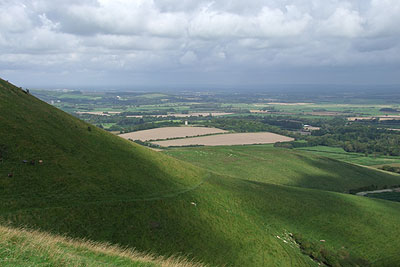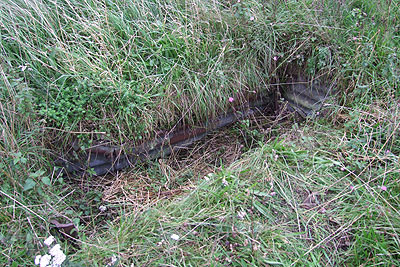Downsforce Project
Posted: 11 October 2008 21:47
 In the past few months I've been cultivating an interest in Downsforce, which was a conglomerate of units tasked with tackling German forces on the high ground between the River Ouse and the Cuckmere River.
In the past few months I've been cultivating an interest in Downsforce, which was a conglomerate of units tasked with tackling German forces on the high ground between the River Ouse and the Cuckmere River.
I've had a field day and made some fantastic discoveries which I'll be outlining in subsequent postings.
The documentary and fieldwork revelations have been non-stop and even if I hadn't been exhausted over the summer and unable to compile this blog as well as conducting research, I doubt if I would've kept up with things.
A simplified summary is as follows: guided by documentary research, my fieldwork has targeted areas not previously recorded as having been explicitly associated with military activity.
I've also looked at known areas such as Mount Caburn near Lewes; this ancient hillfort was occupied as a vantage point by the military. Professional archaeological excavations have been carried in the area, though not on the slit trenches; my fieldwork has nothing major to add to the findings, but the documents I've consulted have identified the timescale of the refortification of Caburn, the unit responsible for the work, who was to occupy the positions and for what purpose.

Then there's the slit trenches elsewhere. To the best of my knowledge, approximately ten trenches on the Downs (apart from those on Caburn) are currently on record; to date, I've located 83 across the whole area and I expect this total to rise as my fieldwork continues.
Conventional 'wisdom' would have you believe that earthworks are rare survivals; my experience is that, in East Sussex, this is not true. If you don't know a particular area was occupied, then it's quite likely you won't identify earthworks there. However, if you know from the documents that a platoon was dug in at a particular location, then depressions in the ground that would otherwise be overlooked can confidently be identified as slit trenches.
This project is very much a work in progress; I've made perhaps ten visits to the Downland area in question and every one of them has yielded fresh information.

Only last week I spent the whole weekend on a hillside recording a series of 11 trenches; trudging wearily along a hitherto untravelled path towards my car on the Sunday afternoon, I chanced upon another trench. I stopped to record it, and an hour later I was still finding and listing trenches, to the extent that I was actually hoping not to find any more!
That one decision to change my route has doubled my knowledge and the number of Downsforce defence works located!
- Pete

Email:
Blog Latest

Bishopstone reveals its pillbox secrets
18 October 2021

Pillbox or Observation Post?
10 June 2020

Uncovering the hidden secrets of a pillbox
8 June 2019

Review of 2018
31 December 2018

Wartime Christmas in East Sussex (2)
24 December 2018
Jargon-buster
Slit trench
Small, narrow trench designed to provide protection against shrapnel and other battlefield hazards. Technically distinct from a weapon pit (which was intended soley as a defensive position) slit trenches were also used as defence works.
This site is copyright © Peter Hibbs 2006 - 2024. All rights reserved.
Hibbs, Peter Downsforce Project (2024) Available at: http://pillbox.org.uk/blog/216570/ Accessed: 27 July 2024
The information on this website is intended solely to describe the ongoing research activity of The Defence of East Sussex Project; it is not comprehensive or properly presented. It is therefore NOT suitable as a basis for producing derivative works or surveys!